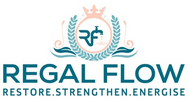
What Does Reverse Osmosis Remove? A Deep Dive into Water Filtration
Ever wondered what your water filter’s really doing? Spoiler: reverse osmosis removes up to 99% of nasties—like chlorine, lead, and microplastics. Whether it’s a countertop dispenser or full system, you’ll learn what gets filtered and why it matters in Reverse Osmosis: The Ultimate Guide to Water Purification.
Understanding the Reverse Osmosis Filtration Process
Reverse osmosis (RO) is one of the best ways to purify your drinking water. It’s like giving your tap water a serious detox. Using a semi-permeable membrane, the process forces water through tiny holes that allow only clean water to pass through, leaving impurities behind. Imagine it as a super-fine sieve that catches all the unwanted stuff and lets the pure water flow. But how does this actually work? Let’s take a closer look.
How the Semi-Permeable Membrane Works
At the heart of an RO system is the semi-permeable membrane – the superhero of the whole process. This membrane is like a super-advanced filter that lets water molecules pass but blocks bigger stuff like salts, bacteria, and other contaminants. It's highly selective, only allowing molecules small enough to fit through its pores. Think of it like a bouncer at a nightclub. The water molecules are the VIPs, and the impurities? They get turned away at the door. The result? Clean, purified water that’s free from many harmful substances.
Key Contaminants Effectively Removed by Reverse Osmosis
Now, let’s get into the nitty-gritty of what reverse osmosis can actually remove from your tap water. RO is a powerhouse when it comes to filtering out common contaminants, and it’s not just about the basics like taste—it’s about protecting your health too.
Dissolved Solids (TDS)
Total Dissolved Solids (TDS) are, in simple terms, the tiny particles that are dissolved in water. These include salts, metals, and minerals, which can affect both the taste and quality of your water. RO systems are fantastic at removing TDS, which means your water tastes fresher, cleaner, and healthier.
Salts and Minerals (e.g., Calcium, Magnesium, Sodium)
You’ve probably heard about “hard” water, right? That’s water full of minerals like calcium and magnesium that can cause limescale build-up in pipes and appliances. RO systems effectively remove these minerals, reducing that annoying build-up and leaving you with softer, cleaner water. While this is great for appliances, some people opt to add these minerals back in for better taste and health benefits.
Heavy Metals (e.g., Lead, Arsenic, Mercury)
One of the key benefits of reverse osmosis is its ability to filter out heavy metals like lead, mercury, and arsenic. These toxic substances often find their way into water sources from old plumbing or industrial contamination. Long-term exposure to heavy metals can cause serious health problems, but RO systems remove up to 99% of them, giving you peace of mind.
Sediment and Particulate Matter
If you’ve ever noticed murky water or particles floating in your tap water, sediment is probably the culprit. RO filters catch and remove everything from sand and silt to rust particles, leaving you with clear, clean water. This is especially useful if you live in an area with ageing infrastructure or if you rely on well water.
Chlorine and Chloramines (with pre-filtration)
Municipal water suppliers often add chlorine and chloramines to disinfect the water, but these chemicals can affect both the taste and smell of your water. Reverse osmosis is excellent at removing chlorine, but pre-filtration is essential to effectively remove chloramines. If you’re sensitive to the taste or odour of chlorine, RO will provide you with much cleaner water.
Fluoride
While fluoride is added to many water supplies to promote dental health, some people prefer to avoid it. RO systems are highly effective at removing fluoride, providing fluoride-free water for those who wish to skip it.
Bacteria and Viruses (most, but not always 100%)
RO systems can remove many bacteria and viruses, but they don’t guarantee 100% removal of all microorganisms. For extra protection, some RO systems are paired with ultraviolet (UV) filters, which help kill any remaining bacteria and viruses. So, while RO can do a lot, combining it with other technologies ensures the cleanest water possible.
Herbicides and Pesticides (some)
If you live in a rural area or near farmlands, your water might be exposed to herbicides and pesticides. Some of these chemicals can sneak through basic filters, but reverse osmosis is excellent at removing many of them. However, some pesticides may still manage to slip through, so combining RO with other filters may give you more peace of mind.
Factors Affecting the Removal Efficiency of RO
Although reverse osmosis is highly effective, a few factors can affect how well it works. Here’s what you need to know.
Membrane Quality and Pore Size
The quality of the RO membrane is crucial for effective filtration. Membranes with smaller pores can catch smaller contaminants. The better the membrane quality, the better the filtration. So when you’re shopping for an RO system, ensure the membrane is up to the job!
Water Pressure and Flow Rate
RO systems rely on water pressure to push water through the membrane. If your water pressure is too low, the filtration process slows down. You’ll get less purified water in a longer amount of time. A good water pressure (usually 40-80 psi) will help your system work at its best.
Temperature
Water temperature can also impact the performance of your RO system. Cold water is harder to filter, so if your water’s too cold, it could reduce efficiency. However, if the water’s too warm, it can damage the membrane, so maintaining the right temperature is important for long-term efficiency.
Pre-Filtration and System Maintenance
RO systems often come with pre-filters that tackle larger particles and chlorine before the water reaches the membrane. Keeping these pre-filters clean and changing them regularly will help ensure your RO system works effectively. Regular maintenance, like replacing the membrane every couple of years, is also key to getting the best performance.
What Reverse Osmosis Does NOT Typically Remove
While reverse osmosis is impressive, it’s not perfect. There are a few things that it doesn’t remove efficiently.
Certain Volatile Organic Compounds (VOCs)
Some VOCs, like pesticides and industrial solvents, can be tricky for RO systems to handle. These compounds are often too small or too volatile for the RO membrane to catch. To ensure you’re getting the best protection, you may need to add activated carbon filters to your setup to target these chemicals.
Some Pesticides and Pharmaceuticals
Certain pesticides and pharmaceuticals might slip through an RO system, especially those with complex molecular structures. If you’re concerned about these contaminants, combining your RO system with additional filtration methods, like activated carbon or UV filtration, can provide extra protection.
Gases (e.g., Radon)
Gases like radon are notoriously difficult for RO systems to remove. Although RO is great at filtering out solids, gases often require special treatment. If you're worried about radon or other gases in your water, it’s best to consult an expert on additional filtration methods.
The Importance of a Multi-Stage Filtration System
For the best possible water quality, it’s often a good idea to pair reverse osmosis with other filtration technologies.
Combining RO with Carbon Filters and Other Media
Many people combine RO systems with carbon filters to tackle things like chlorine, volatile organic compounds, and taste issues. Carbon filters are fantastic at removing chemicals and improving the water’s flavour, making it a perfect companion to RO. Multi-stage systems give you comprehensive protection, removing more contaminants and ensuring your water tastes great.
Conclusion: The Wide Range of Contaminants Removed by Reverse Osmosis
Reverse osmosis is one of the most effective ways to purify your water. From heavy metals and bacteria to chlorine and fluoride, it removes a huge range of contaminants. While it doesn’t catch everything, combining RO with other filtration methods ensures your water is as clean and safe as possible. Ready to enjoy better water? A reverse osmosis system might be exactly what you need to take control of your water quality.
More Reverse Osmosis info we think you'll love
Reverse Osmosis Advantages and Disadvantages
Reverse Osmosis in Wastewater Treatment
Reverse Osmosis vs Bottled Water
Reverse Osmosis vs Water Softener
Reverse Osmosis vs Alkaline Water
Can Reverse Osmosis Remove Fluoride?


Leave a comment